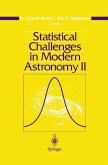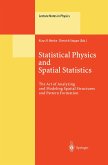Intended for advanced undergraduates and graduate students, this book is a practical guide to the use of probability and statistics in experimental physics. The emphasis is on applications and understanding, on theorems and techniques actually used in research. The text is not a comprehensive text in probability and statistics; proofs are sometimes omitted if they do not contribute to intuition in understanding the theorem. The problems, some with worked solutions, introduce the student to the use of computers; occasional reference is made to routines available in the CERN library, but other systems, such as Maple, can also be used. Topics covered include: basic concepts; definitions; some simple results independent of specific distributions; discrete distributions; the normal and other continuous distributions; generating and characteristic functions; the Monte Carlo method and computer simulations; multi-dimensional distributions; the central limit theorem; inverse probability and confidence belts; estimation methods; curve fitting and likelihood ratios; interpolating functions; fitting data with constraints; robust estimation methods. This second edition introduces a new method for dealing with small samples, such as may arise in search experiments, when the data are of low probability. It also includes a new chapter on queuing problems (including a simple, but useful buffer length example). In addition new sections discuss over- and under-coverage using confidence belts, the extended maximum-likelihood method, the use of confidence belts for discrete distributions, estimation of correlation coefficients, and the effective variance method for fitting y = f(x) when both x and y have measurement errors.
From the reviews of the second edition:
"This book is the second edition ... of a practical introduction into probability and statistics in experimental physics. The book is primarily written for undergraduate and graduate students and contains a new chapter on queueing theory and an additional discussion of the Feldman-Cousins unified method for estimating confidence intervals."
(Ulrich Horst, Zentralblatt MATH, Vol. 1011, 2003)
"The book under review is rather unconventional in many respects, in particular concerning the choice of covered topics and the style of presentation. ... Its main goal is to provide the reader with techniques actually used in experimental research. They are illustrated by a series of worked problems. ... some material is included that one hardly finds in other books of this kind, like elements of queuing theory ... . many experimental physicists would appreciate probably to have a copy of this book within hand-reach."
(F. Binon, Physicalia, Vol. 38 (5), 2002)
"This book is the second edition ... of a practical introduction into probability and statistics in experimental physics. The book is primarily written for undergraduate and graduate students and contains a new chapter on queueing theory and an additional discussion of the Feldman-Cousins unified method for estimating confidence intervals."
(Ulrich Horst, Zentralblatt MATH, Vol. 1011, 2003)
"The book under review is rather unconventional in many respects, in particular concerning the choice of covered topics and the style of presentation. ... Its main goal is to provide the reader with techniques actually used in experimental research. They are illustrated by a series of worked problems. ... some material is included that one hardly finds in other books of this kind, like elements of queuing theory ... . many experimental physicists would appreciate probably to have a copy of this book within hand-reach."
(F. Binon, Physicalia, Vol. 38 (5), 2002)








